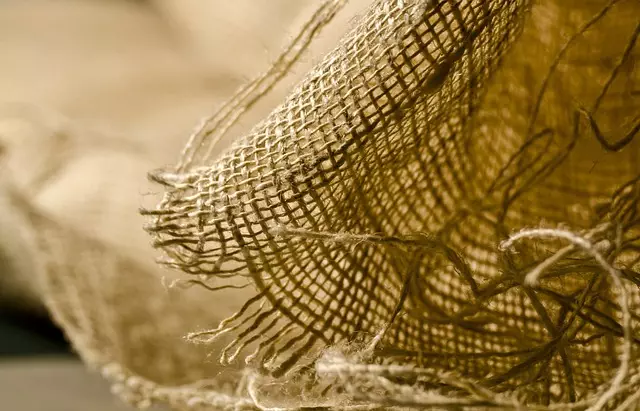Maeng Da and Red Bali kratom are popular among athletes for their potential to support performance and recovery due to their unique alkaloid profiles. Maeng Da contains high levels of mitragynine and 7-hydroxymitragynine, which may aid in pain management and mood enhancement, contributing to improved muscle recuperation post-training. This strain can help athletes manage pain and maintain mental focus during rigorous training without overstraining recovery processes. Red Bali kratom offers a different alkaloid balance with a strong presence of 7-hydroxymitragynine along with additional compounds, which are beneficial for muscle relaxation and pain relief, particularly in the recovery phase. The analgesic effects of Red Bali may enhance blood circulation and reduce inflammation, potentially improving athletic training adaptation by ensuring muscles receive essential nutrients and oxygen. When comparing Maeng Da vs Red Bali for athletic performance and recovery, Maeng Da is often favored for its energizing properties, while Red Bali is preferred for its pain-relieving and calming effects. Both can play a role in holistic recovery regimens, complementing diet, hydration, rest, and other recovery practices. Users should be aware of individual differences in response to kratom and approach its use with caution within a comprehensive recovery strategy. Maeng Da vs Red Bali kratom comparison highlights their distinct roles in supporting athletic performance and recovery, with ongoing research exploring their impact on muscle recovery and adaptation within the fitness community.
explore the potential of kratom, particularly Maeng Da and Red Bali variants, in enhancing muscle recovery post-training. This article delves into the unique alkaloid profiles of these strains and how they can be woven into an effective recovery routine. By examining their effects on training adaptation, we aim to provide insights into the benefits and considerations of incorporating Maeng Da vs Red Bali kratom into your post-exercise regimen. Join us as we unravel the science behind these plant compounds and their role in athletic recovery.
- Unraveling the Effects of Maeng Da and Red Bali Kratom on Muscle Recovery and Training Adaptation
- Comparative Analysis: Mitragynine Content and Alkaloid Profiles in Maeng Da and Red Bali Kratom Leaves
- Integrating Maeng Da and Red Bali Kratom into a Comprehensive Post-Training Recovery Routine
Unraveling the Effects of Maeng Da and Red Bali Kratom on Muscle Recovery and Training Adaptation

Maeng Da and Red Bali kratom varieties have garnered attention within the realm of athletic performance and recovery due to their distinct alkaloid profiles that may influence muscle recuperation and training adaptation. Maeng Da, often revered for its potent effects, is known to contain a high concentration of mitragynine and 7-hydroxymitragynine, which are believed to play roles in pain management and mood enhancement, potentially aiding in the reduction of soreness post-training. This can facilitate an environment conducive to muscle recovery, allowing for more frequent and intense training sessions without overburdening the body’s healing processes.
In contrast, Red Bali kratom is celebrated for its balanced alkaloid spectrum, which includes a notable presence of 7-hydroxymitragynine as well, but also other bioactive compounds that may synergistically contribute to muscle relaxation and pain relief. The analgesic properties of Red Bali can be particularly beneficial for athletes in the recovery phase, promoting improved blood circulation and reducing inflammation. This holistic approach to recuperation can enhance training adaptation by preparing the muscles for the next cycle of exertion with optimal oxygen and nutrient delivery, thereby supporting a more efficient and effective workout regimen over time. Both Maeng Da and Red Bali kratom have unique properties that can be leveraged to complement a well-structured training and recovery protocol, with their effects on muscle recovery and adaptation being subjects of ongoing research and discussion in the fitness community.
Comparative Analysis: Mitragynine Content and Alkaloid Profiles in Maeng Da and Red Bali Kratom Leaves

Maeng Da and Red Bali kratom leaves are both widely recognized in the kratom community for their distinct alkaloid profiles, particularly mitragynine, which is one of the primary active compounds found in kratom. A comparative analysis of these strains reveals that while they share commonalities, their specific alkaloid compositions contribute to their unique effects and potential roles in training recovery. Maeng Da kratom, often celebrated for its invigorating properties, tends to have a higher concentration of mitragynine compared to 7-hydroxymitragynine. This balance can influence physical endurance and mental acuity, making it a preferred choice among individuals seeking support in athletic training and post-exercise recovery. In contrast, Red Bali kratom is known for its high levels of 7-hydroxymitragynine, which may offer analgesic effects that are beneficial for pain management associated with intense physical activity or injury recovery. The synergy between these alkaloids can provide a broad spectrum of benefits, from pain relief to mood enhancement, which are critical factors in the holistic process of training recovery. Users often experiment with Maeng Da versus Red Bali to determine which strain aligns best with their specific needs and sensitivities, as individual responses to kratom can vary significantly. Understanding the nuanced differences between these strains is essential for those looking to integrate kratom into a recovery regimen, particularly when considering the alkaloid content of Maeng Da versus Red Bali kratom leaves.
Integrating Maeng Da and Red Bali Kratom into a Comprehensive Post-Training Recovery Routine

Incorporating Maeng Da and Red Bali Kratom into a post-training recovery routine can be a strategic approach to enhancing muscle recovery and overall well-being. Maeng Da, known for its invigorating and balanced alkaloid profile, is often favored by individuals seeking both stimulating and soothing effects, which can be beneficial after an intense workout session. Its potential to improve focus and reduce discomfort makes it a valuable addition to a recovery routine, helping the body to heal and adapt to the stress of exercise. On the other hand, Red Bali Kratom is renowned for its calming properties, which may aid in alleviating muscle soreness and promoting relaxation after physical exertion. Its pain-relieving effects are particularly useful in managing post-exercise aches and pains, allowing for better rest and recovery.
When comparing Maeng Da vs Red Bali, it’s important to consider the unique impacts each strain can have on the body’s recovery process. Maeng Da’s dynamic balance may provide a more invigorating recovery experience, while Red Bali’s sedative properties might offer a more restful and tranquil recuperation period. Users often experiment with both to determine which strain complements their individual needs best. It’s crucial to dose carefully, as the effects of Kratom can vary widely based on personal physiology and tolerance. Additionally, integrating these strains into a comprehensive recovery routine should be done in conjunction with other recovery methods such as proper nutrition, hydration, ample sleep, and stretching or massage therapy to ensure a holistic approach to post-training recovery.
Maeng Da and Red Bali kratom have garnered attention within athletic and fitness circles for their potential roles in muscle recovery and training adaptation. This article has delved into the effects of these kratom strains, offering a comparative analysis of their mitragynine content and alkaloid profiles. The findings suggest that both Maeng Da and Red Bali can be beneficial when integrated into a post-training recovery routine. For those seeking natural alternatives to aid in their recovery processes, this exploration of maeng da vs red bali provides valuable insights for informed decision-making. As with any supplement, it is advisable to consult healthcare professionals before incorporating kratom into one’s regimen, ensuring a balanced and effective approach to overall wellness and performance enhancement.






